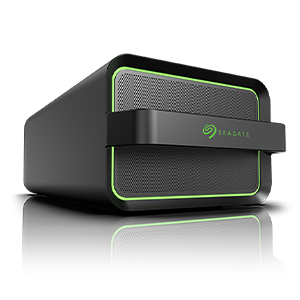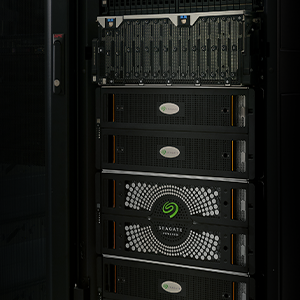As data volumes continue to grow exponentially, businesses face rising storage costs, including power consumption and physical space. Higher storage areal density plays a critical role in reducing these costs by enabling more storage per drive, which translates to greater power efficiency per terabyte. Heat-assisted magnetic recording (HAMR) is a breakthrough hard drive technology that boosts areal density to enable higher storage capacities, lower power consumption, and reduced total cost of ownership (TCO). These efficiency gains are particularly crucial as data center electricity use rises, with projections showing it could reach 12% of the future total U.S. electricity consumption by 2028.
The evolution of hard drives.
Hard disk drive technology began in the 1950s with IBM’s introduction of the first hard drive, which stored just 5MB of data and required an entire room. Early drives were large and costly but laid the foundation for future advancements.
Over the decades, hard drives have undergone significant transformations, with reductions in physical size and dramatic increases in storage capacity. Hard drives have undergone significant transformations, with reductions in physical size and dramatic increases in storage capacity.
Innovations such as thin-film heads and magnetoresistive (MR) heads have played crucial roles in this evolution. Thin-film heads allow for smaller and more precise read/write operations, while MR technology uses separate heads for reading, improving sensitivity and efficiency. Today, hard drives boast impressive capacities, with some models reaching up to 36TB, and Seagate labs testing models with 6TB per disk. Despite these advancements, demand for even greater storage continues to grow, pushing the limits of current technologies.
PMR technology.
Perpendicular magnetic recording (PMR) revolutionized data storage by aligning magnetic bits perpendicularly to the disk surface. This allowed for a greater areal density compared to longitudinal recording.
PMR enabled significant increases in storage capacity, making it possible to store more data into the same physical disk space. However, PMR has reached its superparamagnetic limit at 3TB per platter, where further increases in areal density are constrained by thermal instability. Anticipating this limitation, researchers at Seagate have been developing innovative technologies to continue increasing storage capacity.
HAMR technology.
HAMR uses a small laser to heat the disk material during the writing process to enable higher data density. This heating temporarily reduces the coercivity of the disk material, enabling the writing of smaller, more closely packed magnetic bits. The material then instantly cools, stabilizing these bits and preserving the data integrity.
Innovations in HAMR, such as the Mozaic 3+™ platform, have pushed the boundaries of areal density, achieving unprecedented levels of data storage. The Mozaic platform has reached areal densities of 3.6TB per disk, and future platforms have shown 6TB per disk in lab demonstrations.
Benefits of HAMR.
HAMR delivers key TCO benefits, including:
- Higher areal density: HAMR surpasses PMR’s limits, significantly increasing storage capacity per disk platter and reducing the total number of platters needed. Seagate lab tests confirm HAMR drives can surpass capacities of 6TB per platter in near-future products.
- Efficiency: HAMR drives offer improved efficiency in data writing and retrieval processes, leading to faster performance and reduced latency.
- Power efficiency: With higher areal density, fewer drives are needed to store the same amount of data, improving power efficiency per terabyte. As a result, HAMR-based drives help reduce overall energy consumption in large-scale deployments.
- Sustainability: HAMR’s higher storage density means fewer physical resources are needed, and its improved efficiency translates to lower power requirements. Seagate’s HAMR-based Mozaic 3+ platform promises 2.6× better power efficiency per terabyte and delivers up to 3.5× better embodied carbon efficiency than standard 10TB drives.
Future considerations.
HAMR technology will continue scaling to meet ever-growing data demands. Researchers are already working toward 10TB per platter. This scalability ensures businesses can keep up with increasing data volumes, driven significantly by AI and its data-intensive applications. HAMR drives are designed to integrate seamlessly with existing data center infrastructures, allowing a smooth transition for businesses adopting this innovative technology.
As HAMR advances, its efficiency benefits will extend beyond storage density, further improving power efficiency per TB in future generations.
By adopting HAMR, businesses can significantly reduce TCO and future-proof their data storage infrastructure, staying ahead in an increasingly data-driven world.










